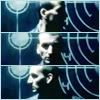new video restoration technique could see dozens of classic episodes of series such as Doctor Who and Dad's Army restored to their original colour for the first time in more than 30 years.
Many television programmes made by the BBC and ITV in the late 1960s and early 70s, although some of the first to be made in colour, only exist in black and white today. Among them are 13 episodes of Doctor Who starring Jon Pertwee, another 13 episodes of Steptoe and Son and the whole of Nigel Kneale's seminal 60s drama, The Year of the Sex Olympics.
The original master tapes of many shows were erased during archive purges. However, before wiping, many were copied on to black and white 16mm film for broadcast in countries where colour television was not yet available. Today, it is these black and white films that survive as the only visual records of some of these programmes.
Recolouring the world
The technique of colour recovery is set to extract the original colour from these films and reapply it, to once again generate a colour master tape for the show.
The technology is the brainchild of James Insell, who first realised the technique's potential while with BBC Research at Kingswood Warren in Surrey. Insell's colour recovery process essentially relies upon a mistake made by the technicians making the original 16mm film recordings back in the 1970s.
Telerecordings (as they are known) were created by shooting, on 16mm film, a required programme that was showing on a high clarity television monitor. However, there were several problems with the process. Principal among these was the change of the frame rate - from the 50 frames per second of video to the 25 frames per second of film. This can now be corrected by a technique called VIDFire.
However, there is a more relevant problem. Any black and white telerecording of a colour programme is prone to pick up interference from the colour encoded video signal. This manifests itself as a pattern of small grey dots, called chroma-dots, across the picture. There was a way to stop this from happening, by using a special filter to cut out the electronic artefacts. However, the interference was often deemed so minor that the technicians doing the transfers used no filter and so the resultant film prints often contain a burnt in pattern of these chromadots.
Insell suggested that it might be possible to decode the original colour signal of the show from these chromadots, since they contain an electronic remnant of the original video signal. Since then, Insell has set up an independent group - outside the BBC - to put together a technology to extract this coded pattern within the black and white film and decode it.
"There are various provisos," Insell says. "The quality of the film has got to be good enough to have captured this pattern. We're really talking about working from the original negatives and having an HD scan made to get as much information as possible from the film." Insell also stresses that the process would only work on programmes that were originally recorded in colour.
The technique is not a colourisation process and does not apply new colour to old programmes, but instead unpicks the original colour from the film. This separates the process from computer colourisation, a technique that has been used in America to add colour to feature films such as King Kong.
Insell says: "As far as computer colourisation's concerned it's very time-consuming and very expensive, and you need to either invent colour from scratch or use colour reference material to figure out what colours things were. In the colour recovery process, what you get out are the original colours."
As good as new
Struggling against the loss of the programmes' original line structure (a television picture would be composed of 625 lines of image, lost when transferred to film), significant advances have been made in recovery technology. This has been principally through a working group set up by Insell and the process has now been successfully tested on parts of an episode of Top of the Pops, with the results deemed to be generally good.
Andrew Browne has been one of the computer programmers behind some of the project's more recent moves forward. "The idea that I had was based on an idea that James had, which was to have what he called a localised decoder," he says. "Basically, if you take successive frames from the film, the pattern [of chroma-dots] in the frames varies in a predictable way across the frame. I worked out a way to use the relationships between the patterns in successive frames to infer what the original colours were."
"The recovered colours leave a little bit to the imagination, but you can see that they're pretty much there," Insell says.
With the software to use colour recovery on a larger scale currently in development, both Insell and Browne are hopeful of a wider future for the technology.
"BBC Worldwide is obviously quite interested in releasing archive content, notably with Doctor Who and various programmes like that," Insell says.
Subscribe to:
Post Comments (Atom)

No comments:
Post a Comment